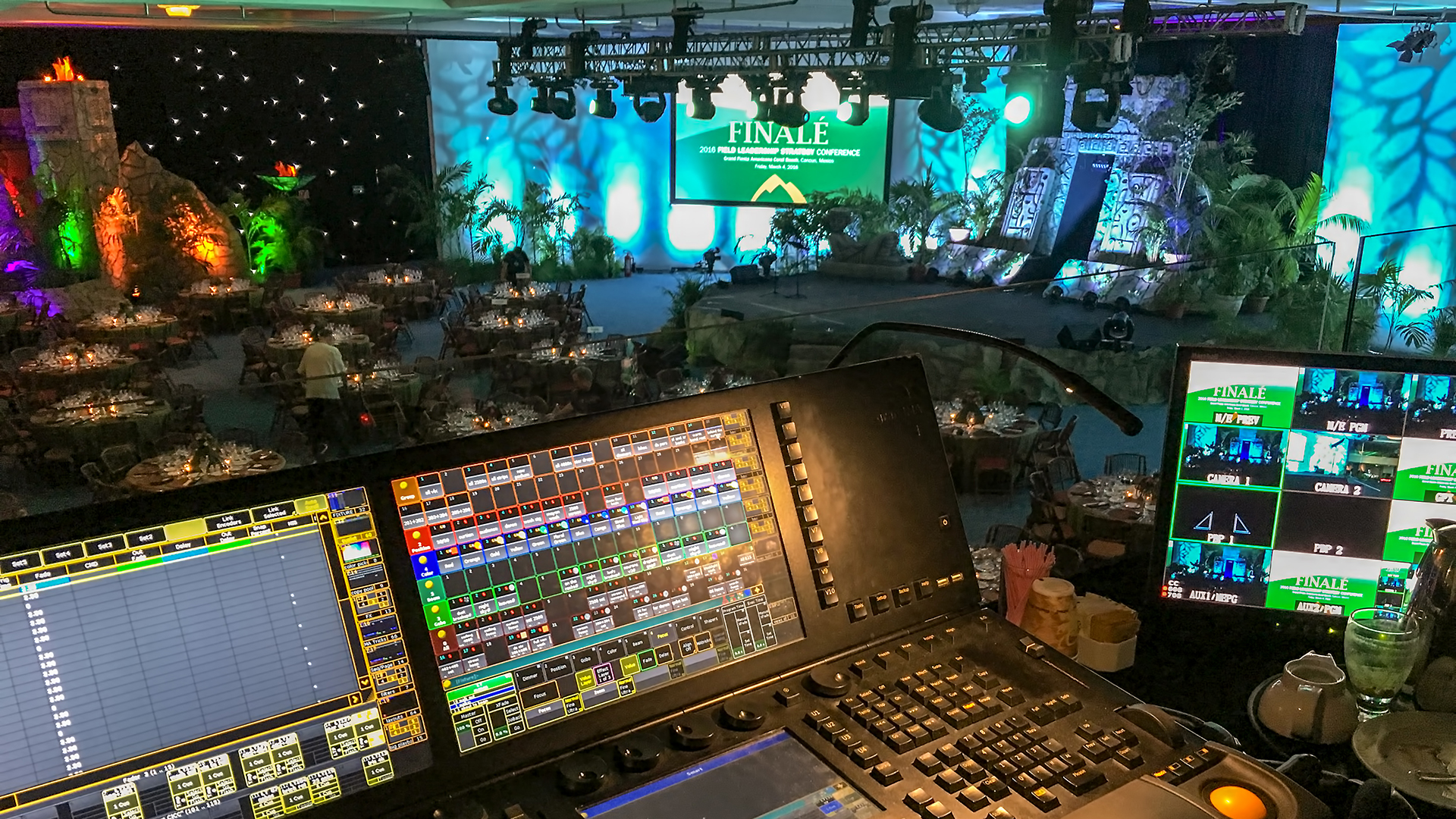October 18, 2018
Front vs. Rear Projection: Which is Best for My Event?
Video is key for any event whether you’re enticing attendees with an introduction video or live streaming to remote locations. But if you plan to use video at your next event, you must decide whether to use front or rear projection.
Simply put, front projection reflects light off of a screen whereas rear projection diffuses light through the screen. They cost about the same and take similar time and effort to load in and load out. So, what makes one better for an event than another? Here are several factors to consider.
Available Space
The amount of available space you have to set-up equipment in your event venue may determine which type of projection to use.
A front projection screen can be placed up against a wall because all the equipment is positioned in front of it. The projector may be located on the floor, hung from the ceiling, or placed in the rear of the room along with all the other production necessities. The projector can be anywhere from a few feet to several yards away from the screen, making this a great option for large spaces and audiences.
Front projection, especially if rigged overhead, frees up floor space for seating, food and beverage service, etc., which can be important if space is limited. On the other hand, you want to be sure there is nothing to block the projection from reaching the screen (such as pillars or chandeliers). If you have a presenter or performer that will be presenting in front of the screen, shadows will be a problem if the screen hangs too low. In that case you may want to choose rear projection.
With rear projection, everything is situated behind the screen, so you’ll need to allow room for that. The exact amount of room required will be dependent on several factors including screen size and availability of specific lenses for the distance and projector being used.
Ambient Light and Image Brightness
Ambient light weakens the image produced by a front projector, so you must be able to darken the room. Darkness also helps the on-screen image appear brighter, although brightness depends primarily on screen gain as well as the projector’s output. (Gain measures the reflectivity of the screen surface.) With rear projection, strong ambient light can actually enhance contrast and color saturation.
Viewing Angle
Where will your audience be in relation to the screen? Too far off to the side, and the image could become distorted. For front projection, screen gain has the most significant effect on viewing angle. As the gain rating rises, the viewing angle narrows, meaning people will need to see the screen more or less straight-on. This isn’t necessarily a problem, as long as screen size correlates well to audience size.
Rear projection supports a wider viewing angle, although different screen materials will diffuse light differently.
Ambiance
Rear projection gives your space a cleaner, more professional look because everything is hidden behind the screen. Conference attendees might not care, but for corporate or black-tie events, a more sophisticated environment might be preferable. That said, the darkened space necessary for front projection can give your audience a more immersive experience.
Once you contemplate all these factors, you may still be unsure whether front or rear projection is best for your event, especially if your event’s overall AV needs are complex. If so, please contact us. Our technical experts are here to help unravel those complexities.




